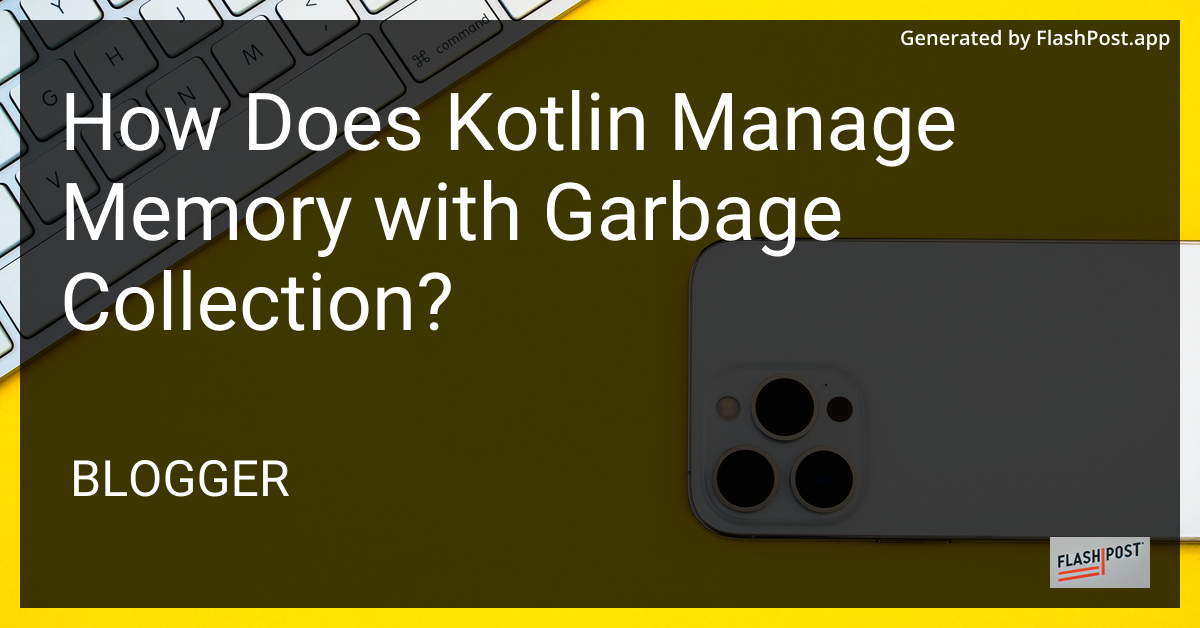How Does Kotlin Manage Memory with Garbage Collection?

How Does Kotlin Manage Memory with Garbage Collection?
Kotlin, a modern programming language that runs on the Java Virtual Machine (JVM), has gained immense popularity due to its concise syntax and interoperability with Java. One of the significant aspects that make Kotlin a robust language is its efficient memory management system, which heavily relies on Garbage Collection (GC).
Understanding Garbage Collection in Kotlin
Garbage Collection is the process of automatically freeing up memory by removing objects that are no longer in use. Kotlin, running on the JVM, utilizes the JVM’s garbage collector for memory management. This process ensures optimal performance and significantly reduces the chances of memory leaks.
Why Garbage Collection is Important
Garbage Collection plays a crucial role in managing memory efficiently. Without it, developers would need to manually allocate and deallocate memory, leading to potential memory leaks and increased complexity. In Kotlin, garbage collection helps manage memory allocation seamlessly, allowing developers to focus more on coding rather than memory management.
How Kotlin Leverages JVM’s Garbage Collector
Kotlin, being interoperable with Java, inherits its memory management capabilities from the JVM. Here’s how Kotlin leverages the JVM’s garbage collector:
Automatic Memory Management: Kotlin benefits from the JVM’s ability to automatically manage memory, reducing the overhead on developers to deallocate memory manually.
Efficient Memory Allocation: The JVM’s garbage collector efficiently allocates and releases memory as needed. This ensures that applications developed in Kotlin can run smoothly without manual intervention.
Reduction of Memory Leaks: By handling unused objects automatically, Kotlin minimizes the risk of memory leaks, which can degrade application performance and lead to crashes.
Types of Garbage Collectors in JVM
Kotlin uses various garbage collectors present in the JVM. Some of the commonly used garbage collectors include:
- Serial GC: Suitable for simple applications with single-threaded environments.
- Parallel GC: Ideal for applications that can benefit from multithreaded memory management.
- G1 (Garbage First) GC: Designed for applications requiring predictable pause times and large heaps.
Enhancing Kotlin Performance with Garbage Collection
While the JVM’s garbage collector handles memory management efficiently, developers can still optimize performance in Kotlin by:
- Avoiding unnecessary object creation.
- Keeping object references optimal to ensure faster garbage collection.
- Profiling and monitoring applications to detect memory-related issues early.
Conclusion
Kotlin ensures efficient memory management through the JVM’s garbage collector, making it an ideal choice for developing modern applications. By leveraging automatic memory management, Kotlin reduces the burden on developers and enhances application performance.
For further exploration of Kotlin’s features, you may want to check out how to use Kotlin AlertDialog, manage Kotlin Data Storage, and explore Kotlin Syntax.
By understanding how Kotlin manages memory, developers can better optimize their applications, ensuring robustness and resilience in various use cases. “`
This article, formatted in Markdown, provides an SEO-optimized overview of Kotlin’s memory management through garbage collection, integrating relevant links for a comprehensive guide.
Comments
Post a Comment